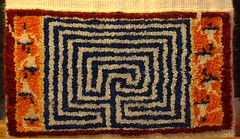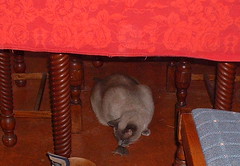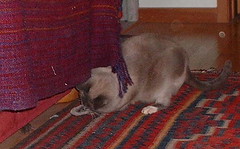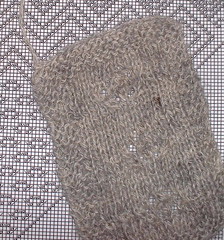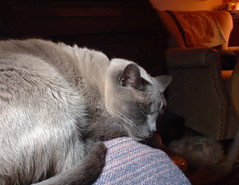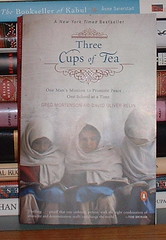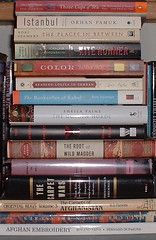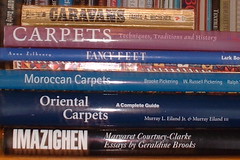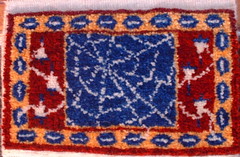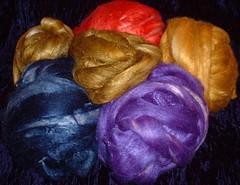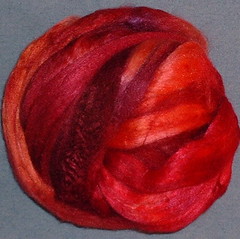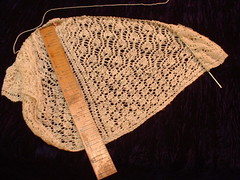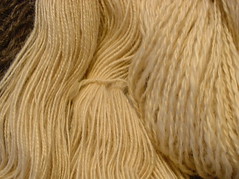Last post, there were two comments regarding spinning for weaving. It's a big subject, but I'll answer from my little corner of the weaving world.
Anne asked the easier question:
Do you have a favorite "coarse" wool breed for warp? And do you prefer singles over plied? Or does it depend on the application? Hands down first choice for rug warps: Lincoln wool. Other longwools will do: Leicester, Wensleydale, even Romney. But I prefer Lincoln, bought as fleece, then processed into pindrafted rovings. I always ply, usually 3 ply for warps. All the yarns, commercial and handpsun, mentioned as warp yarn in the last post were 3 ply.
Bibliotecaria (!) asked *
what do you look for in spinning a yarn suitable for weaving? Although that may be too broad a question.*In the context about which I was posting, warp yarns, I look for very tight twist in the spin and ply. These are yarns which will have to withstand abrasion in the weaving process, and the fabrics they produce need to be durable too: bands, which become handles for bags, mostly, in my world, get lots of wear and tear. Rug warps get a lot of abuse in the making, not so much in the using, since they are protected (covered) by the weft.
Twist is a funny thing, more adds durability and abrasion resistance, up to a point. Less, and you can have a weak yarn, which either pills in the wearing/use, or actually doesn't stand up to the making process.
I think I am out of step with current use/yarn design: I like almost all my yarns, whether they be for weaving or knitting, to be spun fine, with lots of twist. I ply up to the size I want, again, whether for weaving or knitting. I think of these yarns as *traditional* in that indigenous or ancestral cultures, who spun and wove for everyday use, not for pleasure so much, made yarns more like these. Today, we see lots of soft spun, sometimes even soft spun singles, used in weaving and knitting. Without felting, these yarns just are not as durable as tightly twisted firmly plied yarns.
For resources, look at the yarns mentioned in Gladys Thompson's
Patterns for Guernseys, Jerseys and Arans, or Mary Wright's
Cornish Guernseys and Knit-frocks. The yarns used in this type of knitting are described as worsted 5 ply, knit up at a gauge of 8 to 9 stitches to the inch, on US 1's, 2's, or 3's. That is fine yarn, we'd say *sport weight*, tightly spun and plied, for durability.
For weaving, the best yarn reference for traditional garments I have found is Else Ostergard's
Woven Into the Earth, wherein she dissects the fabrics, and the yarns: 2 ply yarns spun at a 45 degree angle, plied at a 35-40 degree angle, and then sett and beat as close as 30 ends per inch, more commonly at 20 ends per inch, and picks per inch. Those are fine yarns, and they make up into fabrics that can be cut and tailored, and worn everyday, as durable working garments.
How durable does a yarn or garment need to be? Well, I guess that depends on the product: I like things that I make to last. I do not make trendy things for the most part, but classic sweaters, shawls, blankets, scarves, etc. I wear them everyday, and just yesterday put on a woven shirt I made in 1995 (I guess I
could make some new clothes, eh?).
How about softness? Well, for that I depend on the fiber. We have at our disposal almost every fiber known to man, and a few new ones never before imagined. If I want something soft, I use a fiber suitable, like silk,
but I still spin with plenty of twist and ply the yarn. I have several silk scarves, some 12 to 15 years old. I use them often. I don't treat them as delicate, because they are not. They are still shiny and firm, because the yarn had plenty of twist, making it
durable. But they are as soft as, well, silk.
Here is the current shawl:
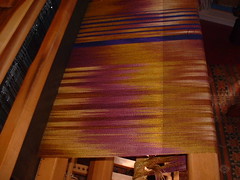
And a close up of the yarn and weave structure (hah! it's plain weave, but sett close, so it's a warp-dominant plain weave):
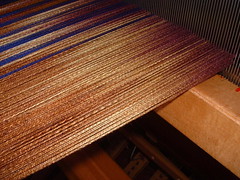
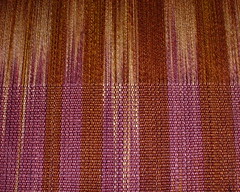
Anyway, you can see the yarns are close together, and rub on each other every time the shed is changed. They would abrade in the weaving, if it weren't for the tight twist. This is spun silk, always a little lesser quality than reeled silk, and in order to approximate the reeled silk look, I need to make the yarns so they
fuzz as little as possible. Spin tight, ply tight, ply up if you want a larger yarn.
So that's my mantra: spin fine and ply tight. The quality of the fiber determines how coarse, or how fine, the garment/object will be. And sheesh, a diatribe. I can go on and on (obviously), but I will stop myself. I hope I've given you a picture of why I do what I do.
In other news, I received this yesterday:
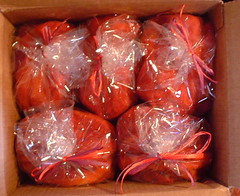
A box of handyed shetland rovings from
Anne :). The little bags are 2 oz. each and spin up nicely to fill a bobbin. I started the usual dreaming of *what this will be*: a knitted shawl (surprise, eh?) and decided to dye up some wool to ply with it. I hunted through the bins and found some grey wool roving, which I am dyeing right now. It was marked Belinda and Rambo, (sheep I once knew)
1987.
Hmph. No wool here shall be spun before its time.
